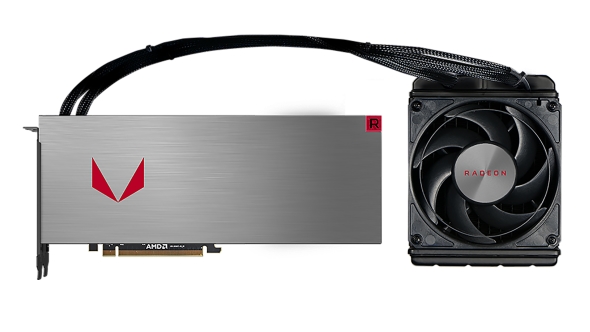
AMD hasn’t competed in the high-end PC gaming market in two years. Their last offering, Fury X, was released in 2015 and although it performed fairly well, it was dwarfed by the Nvidia’s GTX 980 Ti. The market is currently dominated by the Core i7 processor of Intel and the GTX 1080 graphics card of Nvidia. August 14 is the date when AMD finds out if it can indeed topple the competition with their latest offering, the AMD RX Vega.
The Vega has been teased numerous times, and was even showcased at this year’s CES in Las Vegas. That was in January and the unveiling looked promising. However, the disappointing Frontier Edition released in June (not meant for gaming machines) cast serious doubts on whether it can deliver.
And now it’s here.
AMD RX Vega’s specs
AMD will be releasing three versions of the Radeon RX Vega 64: a limited edition, a liquid-cooled version, and a standard model. Among the annouched was a lower tier Radeon RX Vega 56 as well.
The Vega uses an improved high bandwidth memory, first introduced in Fury, called HBM2. It operates at low clock speeds but has really huge 2048-bit buses which allow high data flow to the GPU. HBM2 allows as much as 8GB of RAM at really high speeds resulting in better visuals even in higher resolutions. Plus, there’s added high dynamic range support.
AMD’s RX Vega also supports high bandwidth cache controller technology which promises an end to stalling when playing PC games with much bigger worlds. Raja Koduri, Radeon Senior Vice President and Chief Architect was excited about this very technology. Due to its high potential in the next few years. It will have upto 13.7 TFLOPS.
FreeSync, a display tech created by AMD as an answer to Nvidia’s G-Sync, also takes center stage with the Vega. The technology was the answer to screen tearing. An issue that presents itself when the monitor can’t keep up with the graphics card and takes away from the game. A FreeSync-supporting monitor takes care of that and when coupled with a Vega, it promises a full immersive gaming experience.
Is it worth it?
If this is AMD’s attempt to grab the top spot from Nvidia, it looks like a pretty good attempt. They can now compete with Nvidia’s GTX 1080 / 1080 Ti. The price point is around 400 to 700 USD depending on which version you choose.
This is also AMD’s attempt at entry into the world of 4K gaming. Highlighting the different technologies that make it capable of such in marketing videos. However, such capabilities were already demonstrated by Nvidia’s GTX 1080 and 1080Ti. Plus, Nvidia is also having a run at AMD’s high bandwidth memory with their Volta line of GPUs next year.
Those attempting a PC build using the Vega architecture should consider it along with a FreeSync monitor. AMD Vega has finally come to the party for gaming enthusiasts !
Also one thing it is really good at above the GTX 1080Ti, and that is Ethereum mining. So it looks like it might be hard to get a hand on one.
Some useful links;
http://support.amd.com/en-us/kb-articles/Pages/One-Year-Limited-Warranty-for-Radeon-Vega-Frontier-Edition-Products.aspx
http://support.amd.com/en-us/kb-articles/Pages/Radeon-Vega-Frontier-Edition-17-6-Release-Notes.aspx









[…] all the products designed with Zen processors have covered those in the upper echelons of the PC market- enthusiasts, enterprise customers and mainstream users. However, the bulk of PC users come from the entry market […]
This is going to be awesome. Great price and great performance. Amd is really giving Intel a run for its money. The only issue is going to be getting my hands on one with all these mining propping up in every corner. They have really ruined the gpu market for gamers
They have raised the price as well but still good combination with free sync
[…] The Ryzen Threadripper is dominating the high core count (HCC) processor market weeks into its release. Here is a look at this most recent AMD creation with all its latest technology updates. […]
My dream build is this with threadripper with free sync monitor !